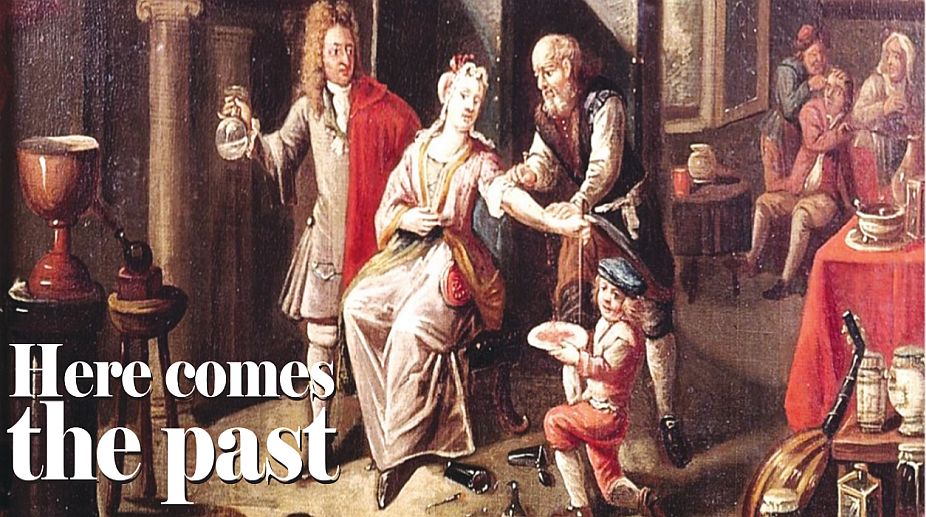Early medical traditions encompass those of Babylon, China, Egypt, and India. The Greeks introduced concepts of medical diagnosis, prognosis and adv-anced medical ethics. In fact, the Hippocratic Oath is still taken (albeit, significantly changed from the original), by doctors. The oath was written in Greece, in the fifth century BCE, in the medieval age.
The mid 20th century was characterised by new biological treatments, like antibiotics. It was not till 1928 that penicillin, the first antibiotic, was discovered by Alexander Fleming, a professor of bacteriology, at St Mary’s Hospital, London. Medieval medicine is viewed with disdain because this chapter had been alluded to the “Dark Ages”, interpreting that the subject was opaque and, as the Dark Ages signify, it was totally unenlightening to the world of medical science.
However, in a volte face in recent times, medievalists and scientists are giving credence to the past; they are in search of clues to create new antibiotics. The search continues because new drugs must be discovered to combat certain microbes that cannot be treated by the antibiotics of these times. But progress is exasperatingly slow. There are reasons for the urgency of discovering new drugs, indeed, to quote PG Wodehouse, “Time is of the essence”.
Antimicrobial resistance, or AMR, threatens treatment of the ever increasing range of infections caused by bacteria, parasites, viruses and fungi. AMR has jeopardised global public health that needs the attention of all governments. Without effective antibiotics, the success of surgery and treatment of chemotherapy can be compromised. Resistant infections will impact healthcare costs, due to a longer duration of illness. Globally, people have begun developing multidrug resistant TB; similarly, drug resistance is complicating the fight against HIV and malaria. AMR happens when microorganisms, like bacteria, change when they are exposed to anti-microbial drugs such as, antibiotics and antifungals. Microorganisms, which develop anti-microbial resistance, are often referred to as “superbugs.”
But what really accelerates the spread of microbial resistance? This is a syndrome which occurs naturally, over a period of time, often due to genetic changes. However, misuse or overuse of drugs, will exacerbate this fragile situation. Antimicrobial resistant microbes are in people, animals, food and in the environment, which can spread between people and animals, or even from person to person. A warehouse storing rice or wheat, for example, with damp walls, will cause fungus, that can harbor these drug resistant microbes; the problem needs the attention of governmental agencies in charge of this department.
A revolution, against antibiotic resistant microbes has begun, to enable science to find new drugs, to battle microbes that cannot be treated by current antibiotics. Researchers have focused their attention on medieval remedies to combat modern superbugs.
A 1,000-year-old Anglo-Saxon remedy for eye infections, appears in a manuscript, in the British Library which has been found to kill a superbug. Christina Lee, has communicated with this writer and she tells us of an ongoing project, related to the Anglo-Saxon era. Research collaboration, at the University of Nottingham, where Lee is an associate professor in Viking studies, has enlisted the help of microbiologists, to recreate a 10th century potion, for eye infections, from Bald’s Leechbook, an old English leather-bound volume in the British Library.
Lee and her colleagues have studied to see if the potion really works as an antibacterial remedy. The Leechbook is thought to be one of the oldest known medical textbooks and contains Anglo-Saxon medical advice and recipes for medicines, salves and treatments. The results of the “magic potion” are being tested at Nottingham University and are being described as “astonishing.”
Researchers are now compiling a database of medical recipes, so by studying patterns in the database and referring to ancient medical practices, materials used to treat infections in the past can now be identified. This becomes the first attempt to create a medieval medicines’ database. The salve, as defined in Bald’s ancient volume, contains wine, garlic, leek or onion, and ox gall. The recipe states that after the ingredients have been mixed together, they must stand in a brass vessel for nine nights before use. It killed MRSA, or Methicillin resistant Staphylococcus aureus, which is one of the most antibiotic resistant bugs.
Lee has summarised this thought provoking study, saying, “The research is a pilot study and shows the potential that such remedies may help but clinical trials are awaited. People have suffered from nasty infections and our studies show that medieval people have tried to combat these infections too. Research will continue and we are hoping for more outcomes in the future.”











